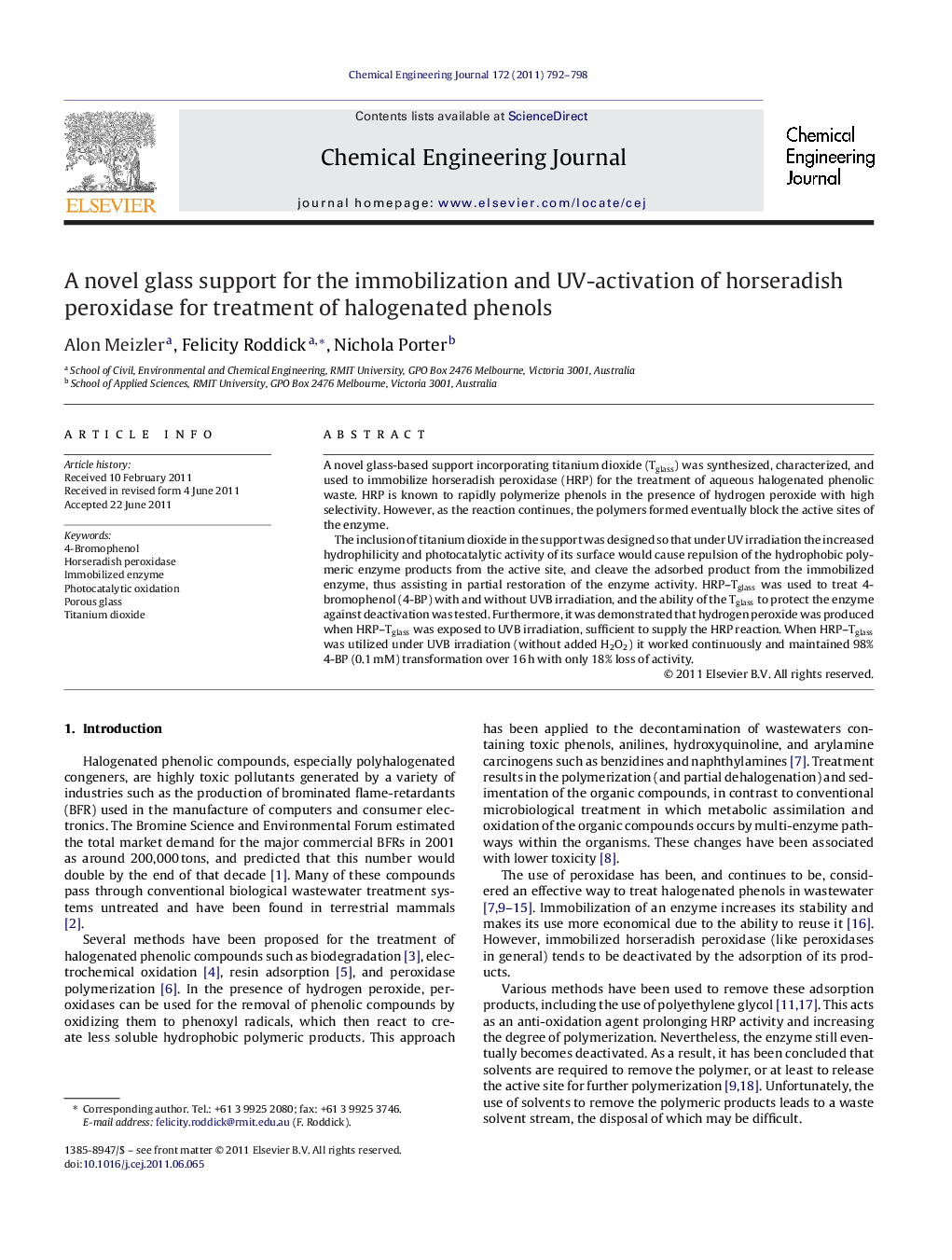| Article ID | Journal | Published Year | Pages | File Type |
|---|---|---|---|---|
| 150779 | Chemical Engineering Journal | 2011 | 7 Pages |
A novel glass-based support incorporating titanium dioxide (Tglass) was synthesized, characterized, and used to immobilize horseradish peroxidase (HRP) for the treatment of aqueous halogenated phenolic waste. HRP is known to rapidly polymerize phenols in the presence of hydrogen peroxide with high selectivity. However, as the reaction continues, the polymers formed eventually block the active sites of the enzyme.The inclusion of titanium dioxide in the support was designed so that under UV irradiation the increased hydrophilicity and photocatalytic activity of its surface would cause repulsion of the hydrophobic polymeric enzyme products from the active site, and cleave the adsorbed product from the immobilized enzyme, thus assisting in partial restoration of the enzyme activity. HRP–Tglass was used to treat 4-bromophenol (4-BP) with and without UVB irradiation, and the ability of the Tglass to protect the enzyme against deactivation was tested. Furthermore, it was demonstrated that hydrogen peroxide was produced when HRP–Tglass was exposed to UVB irradiation, sufficient to supply the HRP reaction. When HRP–Tglass was utilized under UVB irradiation (without added H2O2) it worked continuously and maintained 98% 4-BP (0.1 mM) transformation over 16 h with only 18% loss of activity.
► A novel glass-based support containing TiO2 was developed for immobilization of HRP. ► Only enzyme bound to the silica surface was active. ► After use, enzyme activity could be restored by UVB irradiation. ► Upon UVB irradiation, sufficient peroxide was generated to supply the HRP reaction.
